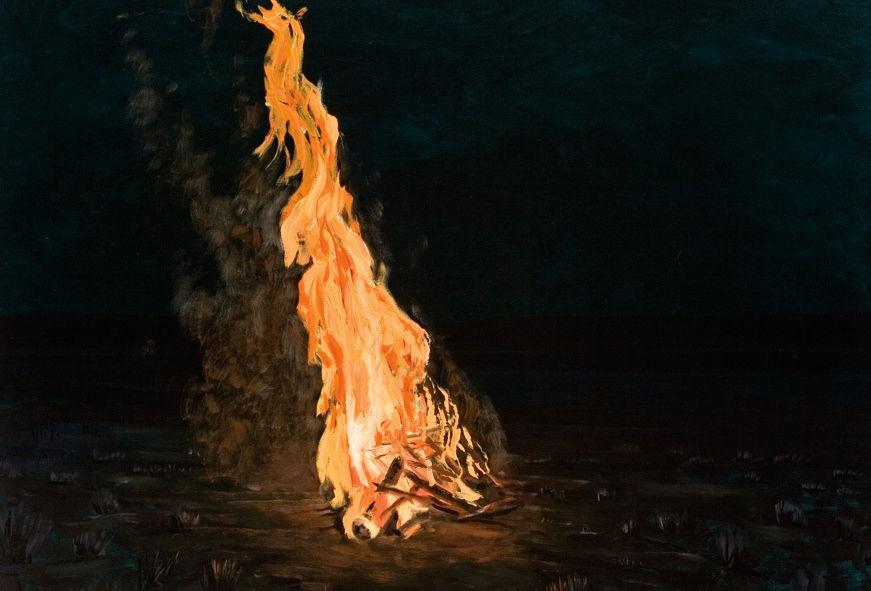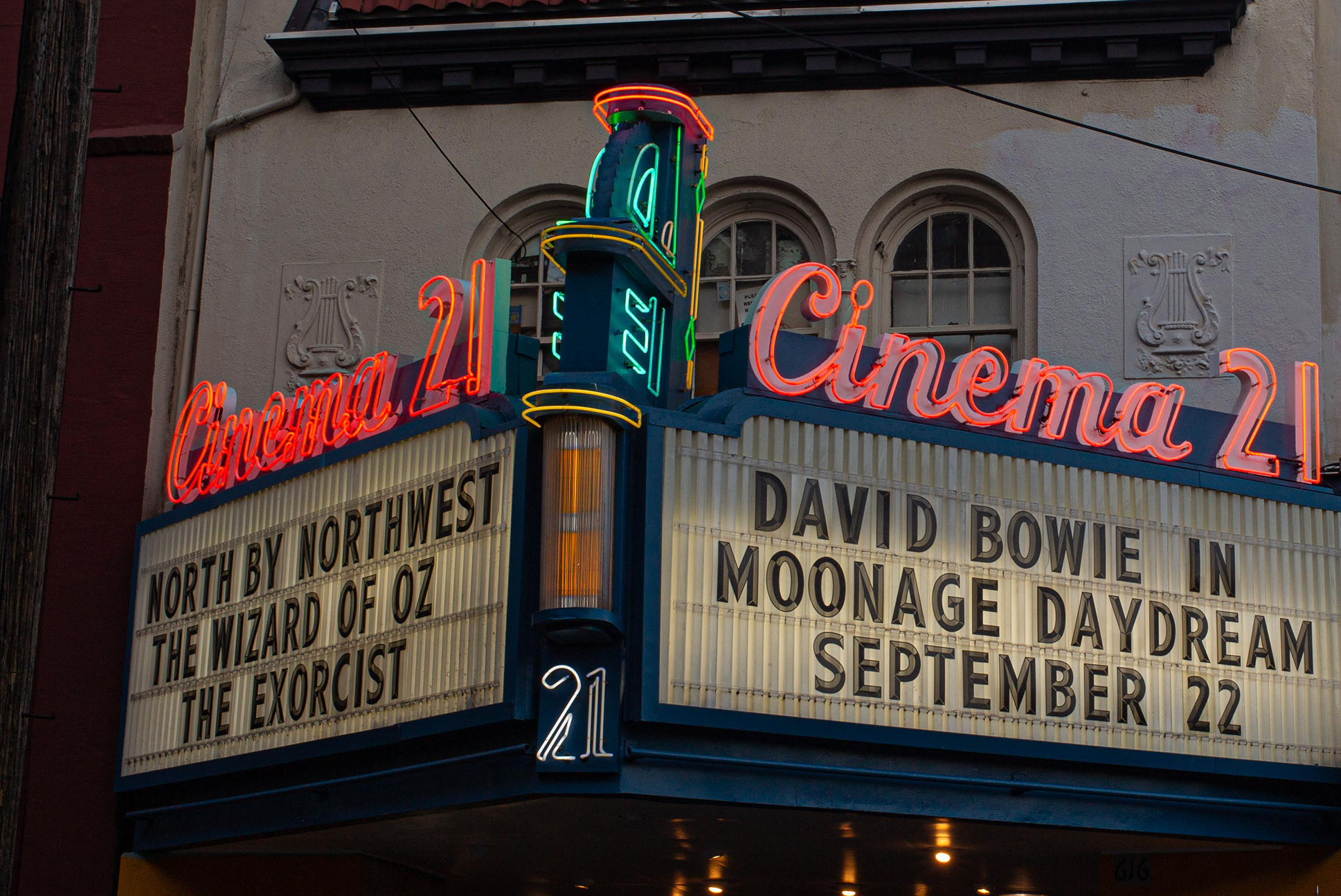Trial by Fire

Image: Bill Bachhuber
MY BROTHER CALLED with the news around 10 a.m. on September 23: A fire had struck the home of our good friends Michael Brophy and Holly Cundiff early that morning. They’d barely made it out alive, bolting out the front door—she’d donned a shawl; he’d pulled on a pair of cutoffs—seconds before their second-floor bedroom exploded in flame.
By the time my partner Randy and I arrived, toting bags of clothes and toiletries, the firefighters and TV cameras were gone and the street was quiet and faintly damp from the hoses. Brophy and Cundiff, surrounded by a small huddle of friends and relatives, stood on the asphalt in front of the old two-story saltbox, its charred window frames gaping like empty eye sockets.
Brophy, his 6’3” frame wrapped in an old Barbour oilcloth coat (one of his few belongings to survive the conflagration) assured us of some good news: The two-bedroom cottage next door, which they’d bought the previous year in lieu of building an addition, had suffered only minor smoke damage. But the old house was trashed, including Brophy’s painting studio, a relic of shiplap walls and plank floors that had comprised the entire ground floor of the building. Although most of his paintings had been saved, 14 huge new canvases, scheduled to be shown at the Laura Russo Gallery in December, had been badly damaged by water and soot.
That afternoon, as we dragged out heavy rolls of old artwork from a rear storage room into the backyard, I avoided looking at the wreckage inside. Since buying the building at age 31, Brophy had spent 16 years there riddling out revelatory interpretations of the Northwest landscape—archly picturesque scenes of electric-line-festooned gorges, distant mountain ranges obscured by slash piles and arena-rock-concert-size crowds convening before sunsets—paintings that have influenced the way a generation of admirers see the region they call home.
Noted Seattle author Jonathan Raban, writing for the Atlantic Monthly, figured Brophy as the present-day champion of a 200-year tradition of Northwest landscape painting. Of course, now that we have cinema and high-definition TV (and, er, glossy magazines) for our immediate visual gratification, painting is no longer the news-making genre it once was. But I’ve often thought that’s what makes Brophy’s patiently wrought artworks even more remarkable. Their refined surfaces—oils applied in a thin, loose play of line and form—take inspiration from Old Masters such as Tintoretto and Titian. Their sly take on history—the way they razz the Romantic ideal of the Eternal Landscape even as they lament grimmer, present-day realities—reveal an intellect influenced by figures ranging from Goya to Woody Guthrie, whose lyrics are emblazoned on some of Brophy’s canvases.
His paintings are constantly evolving, and over this past spring and summer I watched them go through another major transformation. The impetus came in part from a major retrospective that opened at the Tacoma Art Museum in late 2005, Brophy told me: Gazing at the record of his two-decade career, he was struck by the reoccurrence of certain images—manhandled forests, mainly, and, ironically, fires and their aftermaths. “It felt like I was dead or something! Like I’d summed up something completely,” he reflected. So he painted “Blowdown,” depicting the edge of a forest uprooted by wind (“like I was sweeping it aside”). Then, working from photographs he’d taken in the dry valleys of eastern Oregon, he composed a series of landscapes that verged on minimalist abstractions.
The roughly 6-by-6.5-foot canvases—“folklore-sized,” the writer Charles D’Ambrosio has called them—stacked up in the studio: “Night Truck,” the quilted-metal back of a freight truck, exposed in a car’s headlights at night; “Meadow,” which started out as a portrait of Bigfoot entering a forest from a sunlit expanse of grass, but evolved into a luridly green field receding into blackness as the paint swallowed up the figure; and “Nowhere,” a line of somber rock cliffs meeting a serene sky. “Holly said they’re what [Mark] Rothko would have painted if he’d never left Portland!” Brophy recalled, laughing.
We were standing in a back room of Millcross Litho, a Southeast Portland print shop that was producing a catalog for the upcoming show, set to open in about five weeks. The paintings, streaked with water and soot, leaned against a cinder-block wall, awaiting the printer’s color-check (against reproductions made prior to the fire). They’d been drying out in storage and would be returned to Brophy the following day to restore as well as he could. He pulled out the wryly titled “Crack of Dawn,” a turgid mound of clouds brightening over a thin slice of desert with an outhouse barely visible in the foreground. “It got really pounded,” he said, tracing the discolored streaks in the air with his index finger.
I asked him how he felt about losing the studio.
“It was like an expulsion!” he said. “Like being driven out of someplace you don’t want to leave.”
He would plow through the repairs in his rented “shoe box” of a studio, he said. Not that he’d make any new paintings there. Until the house was rebuilt, he’d work on small gouaches at a table he’d set up in his kitchen in the two-bedroom cottage, a few feet from the burn. He hoped to reconstruct the studio to its orignal proportions, on the same footprint, within a year. Some friends had been trying to persuade him to move it away from the property line (it had directly abutted the cottage), so he could finally punch a few windows in the west wall. But he was firm. It seemed paradoxical that an artist so consumed by the idea that nothing transcends history, that everything is tethered to a time and a place—even God’s forests and Rothko’s rapturous fields of color—would be so fiercely protective of one aged room on N Going St. But in a way it makes perfect sense—as if, even as history wears the world down, Brophy will hold his ground.




